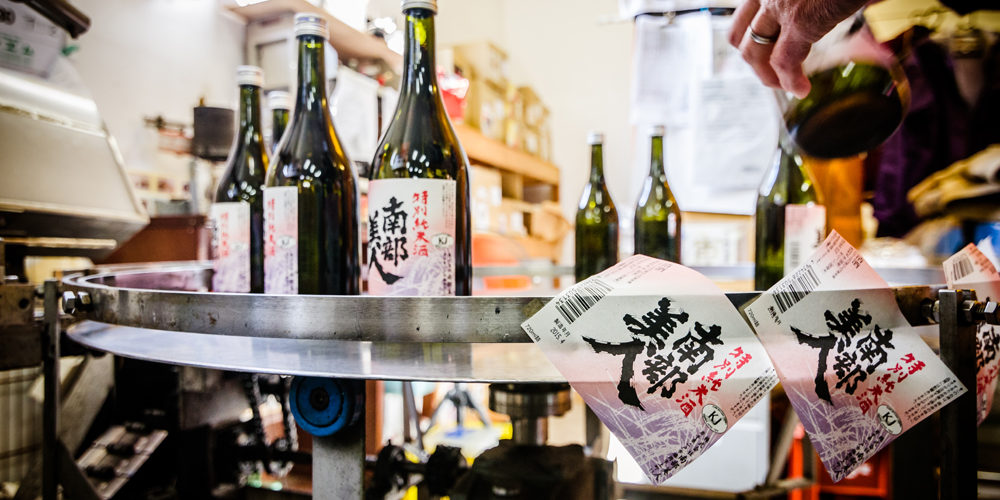The sake world is shining bright, though some dark corners remain. It is easy to lose perspective when so much is going well; perspective, in fact, takes effort to maintain. As brightly as sake seems to be shining overseas, it’s light is waning at home.
Yes, sake is Japan’s national alcoholic beverage. To many, it may be one of the most fascinating, culturally rich and tastiest drinks on the planet. But apparently, a lot of Japanese consumers never got the memo on that. Sake consumption in Japan is currently less than seven percent of all alcoholic beverages consumed.
As Nietzsche said, there are no facts; only interpretations. There are many ways to interpret this statistic, then. To begin with, overall per capita consumption of alcohol in general is on a downward trend in Japan. Sake is suffering the same fate as many other drinks. Sake has actually been more or less on the decline since its peak in 1973. There have been a few years when it edged up, but the overall trend is decidedly downward.
Against that backdrop, premium sake in Japan is enjoying renewed popularity these days. The inexpensive grades are hurting, but premium types like junmai-shu and the four ginjo grades certainly are growing in both popularity and consumption. An extremely rough assessment of the domestic sake market might look like this: the top twenty-five percent of the market is growing at about ten percent a year, and the bottom seventy-five percent is contracting at about ten percent a year.
Certainly that varies year by year, and just as surely the reality is not as clean as the 25/75 line we have drawn, but this approximation is close enough for our work here. This means that the overall sake market is in fact contracting, in spite of the apparent surge in popularity of late. This also means that more people are finding premium sake appealing and drinking that, while fewer people are drinking inexpensive sake.
With but a handful of exceptions, all sake brewers make all grades. There are a couple that make only ginjo, or conversely, no ginjo. There are some that make no futsu-shu (non-premium sake) and only premium sake. There are also about sixty or so out of roughly twelve hundred that make only the junmai grades, but basically, almost all brewers make almost all grades.
There are of course other tendencies. A number of kura make predominantly inexpensive sake for mass consumption. Nobody wants to see these breweries–or any others for that matter–suffer. Prosperity for all! But as that segment of the market in which such companies predominantly serve continues to contract, something will have to change. That something can be one of a handful of possibilities. A brewery that depends on its futsu-shu revenue will need to come up with creative ways to market and compete so as to lure customers from competition and keep its share. It might have to shift to flavored sake or other less than fully traditional types. Or they can shift to premium sake and compete there, or even shift to selling more by-products of sake than the good stuff itself. Innovation and creativity will be essential to navigating these challenges; they’ll need to think outside the box of tradition. One way or another, something will have to change in the way they do business.
An across-the-board revival is not likely. It would seem that there will always be a need for less expensive sake. However, with premium sake garnering so much attention these days, and with media telling us what we should be drinking in mediums that seem to hold greater sway over our lives, cheap sake is going to have a tough time for the foreseeable future. Sure, it’s inexpensive. The general quality of futsu-shu, too, is not bad at all. These days, though, there are so many alternatives for those that just want a cheap buzz, and no reason to choose inexpensive sake.
If a rising tide lifts all boats, that includes luxury cruise ships and yachts as well as dugouts and rafts. If premium sake continues to sell well, the industry as a whole will do better and inexpensive sake will sell well too. Since sake is doing well outside of Japan, it is tempting to think that exports might hold promise as a solution. They do, to a degree. It’s not because of volume. In 2014, just two percent of all sake produced was exported. That’s it!
If that doubles, it still only totals four percent. If it triples or even quadruples, it is still not a significant part of the market. What exports can really improve is the image of sake inside Japan. It’s the gyaku yunyuu, or “reverse importation” effect. If local consumers see that people around the world are enjoying their indigenous beverage, not to mention studying it, then they will surely turn back to sake and appreciate it even more. This, in turn, will help the whole market and affect the tide that will raise the flotilla of sake producers of both ginjo-shu and futsu-shu alike. And unless sake consumption in Japan–across all grades–does not pick up, some big changes are imminent. So keep drinking. And let us hope Japanese consumers do as well.
John Gauntner
co-founder & managing editor






